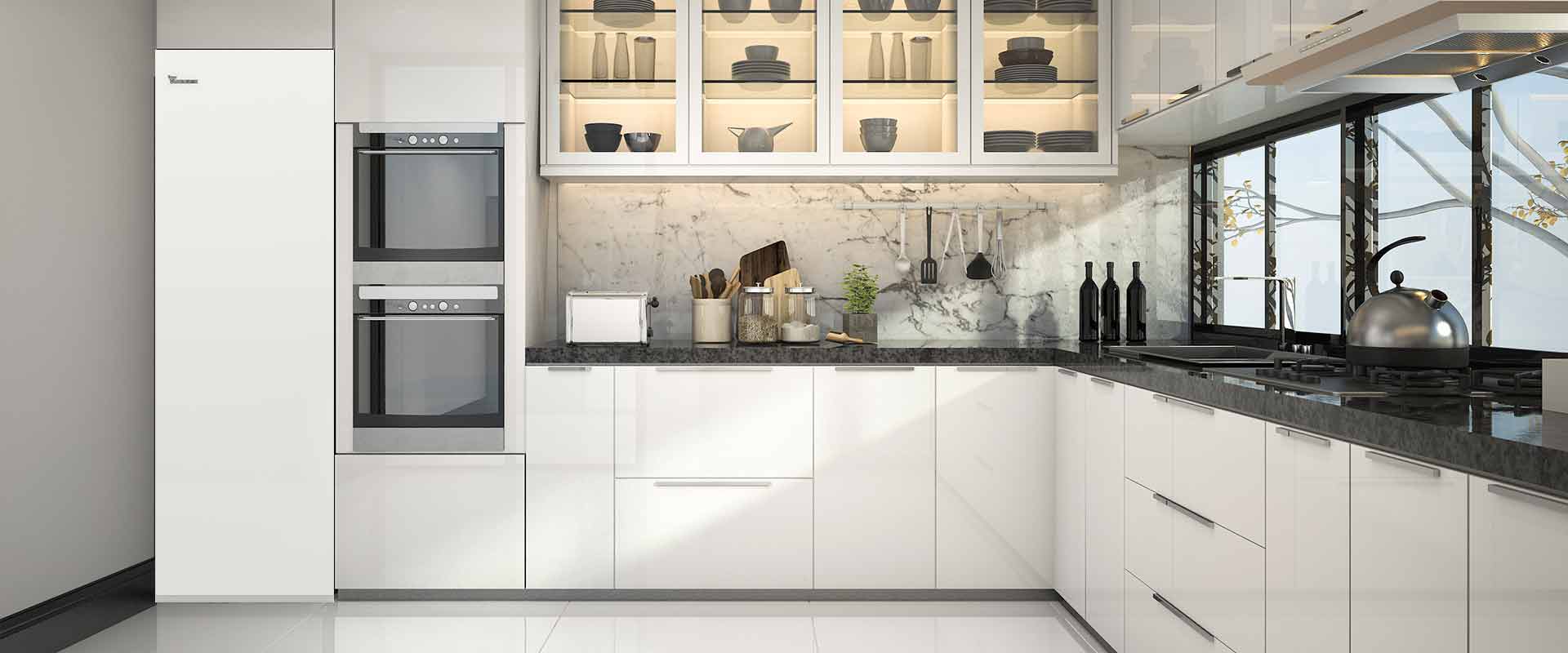What is a brine/water heat pump?
The brine/water heat pump, also known as a geothermal heat pump, draws its energy from the earth. The great advantage of the ground as a heat supplier is its constant temperature: In summer as well as in winter, the temperature below the ground in our latitudes is about 8 - 10 degrees Celsius. The geothermal heat can be utilized by different systems: Brine/water heat pumps extract the heat energy using ground probes or ground collectors, while water/water heat pumps use well systems.
A heating system with many advantages
How brine/water heat pumps work
The brine/water heat pump uses the earth's heat to make use of thermal energy for heating, passive cooling and domestic hot water. The actual heat pump is located above the earth's surface. To supply the brine/water heat pump with thermal energy, either ground probes or ground collectors are used.
A refrigerant with a low boiling point circulates in the brine/water heat pump and absorbs heat from the ground. In the evaporator, the refrigerant changes from a liquid to a gaseous state. The compressor further increases the temperature by reducing the volume and compressing the refrigerant vapor. When the refrigerant reaches the required temperature level, it transfers heat to the heating system via a heat exchanger. The cooled refrigerant becomes liquid again and loses the remaining pressure through the expansion valve that transports the refrigerant back to the evaporator and the cycle begins again.
Geothermal probe, collector or well drilling?
The individual answer to this question depends on existing rock properties and groundwater flow.
Brine/water heat pump with ground collectors
The ground collectors are laid horizontally and in loops at a depth of only 0.8 to 1.5 meters at a distance of 60 to 80 centimeters, in a snake-like manner in the ground, similar to an underfloor heating system. On average, the collectors of the brine/water heat pump are located at a depth of one meter. Here, the average temperature is about 10°C throughout the year. When deciding on a geothermal heat pump, the ground collector area should be about 1.5 times the size of the living area to be heated.
brine/water heat pump with earth probes
For a geothermal probe system, one or more boreholes are required. The number and depth of the boreholes depend on the soil conditions and the energy required by the heat pump for heating. The boreholes are drilled vertically into the ground to a depth of 100 meters. Then the brine circulating in the pipe can be collected and transported to the heat pump.
Passive cooling with brine/water heat pumps
Passive cooling with a brine/water heat pump is a very cost-effective way of using the low temperatures in the ground to cool rooms in a pleasant and environmentally friendly way. Excess heat is extracted from the rooms and drawn off into the ground. Existing heating surfaces, such as floor, wall or ceiling heating systems, can be used as cooling surfaces.
In this way, a cost-effective and environmentally friendly feel-good climate is quickly created according to personal preferences. Best of all: the cooling can be tempered gently and without any annoying drafts.
Requirements for a ground source heat pump
The most important requirement for a brine/water heat pump is the condition of the ground and the available space.
The suitability of the soil must be professionally tested and a permit obtained. Depending on whether a ground probe system or ground collectors are to be used, sufficient space is required on the property. While geothermal probes require a wide area for installation, ground collectors involve drilling deep into the property.
Advantages of the brine/water heat pump
- Earth as an energy supplier is almost inexhaustible, climate-friendly and freely available. The electricity required is roughly equivalent to a quarter of the energy extracted.
- Especially in winter, geothermal heat as a source of energy is a particularly efficient way to use environmental energy, because the temperature in the ground is constantly about 8-10 degrees throughout the year.
- On hot summer days, the heat pump can be used as a cost-effective, passive cooling system.
- Since no combustion process is carried out and the brine circuit is closed, a brine/water heat pump is particularly reliable in operation.
- For the brine-water heat pump, there are several systems available to make use of geothermal energy: Ground probes, ground collectors, trench collectors, ground baskets.
- No permit is required for ground collectors or trench collectors.


